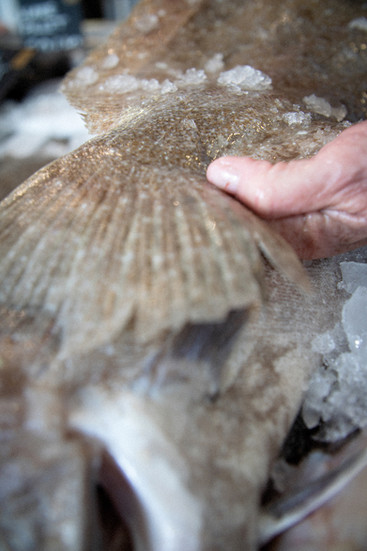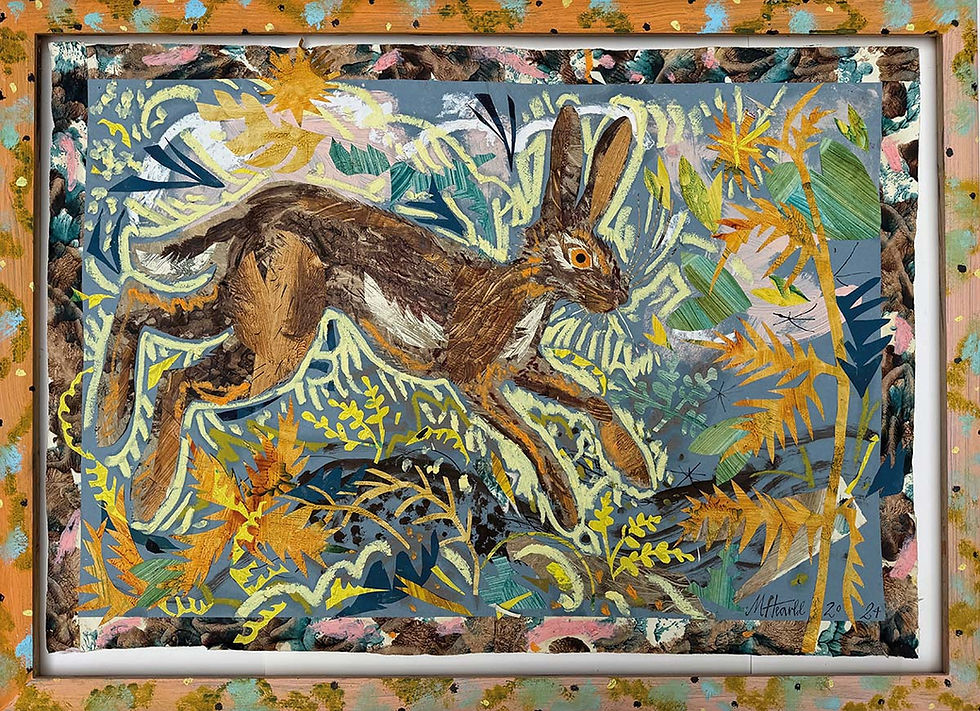Impressions from the ocean
- Jamie Crocker

- Jul 3
- 3 min read
Updated: Sep 15
Words by Jamie Crocker
Stevie McCrindle is a force of nature. While others perceive doubt and fear, she discerns potential.

Her positive outlook is infectious. Brought up in the harbour town she has returned to, she is a dynamic entity within the community, stepping up to the mark when others wilt away; she engages and motivates. Her forte isn’t chained to a single discipline; it flies free, swirling and weaving like a rolling wave.
You’ll find her in her modest yet thoughtfully presented space on New Road, Newlyn, surrounded by art that can trace its provenance to the sea in one way or another. In fact, it is this connection that informs her ongoing venture, which is gradually rising and growing beyond its genesis. On the walls of the gallery, you’ll see her art, representing the beginning of this journey.
Neither sentimental keepsakes nor throwaway décor, the pieces are vibrant, anatomical impressions of marine life – John Dory, turbot, even invasive Mediterranean octopus – rendered directly from the fish themselves in iridescent acrylics, printed onto fine paper and eaten not long after. Her work reimagines Gyotaku, an 18th-century Japanese method of recording a catch before supper, stripping it of nostalgic reverence and placing it in a contemporary realm with fine and broad black line work.
But it is what Stevie then goes on to do with those prints that elevates her work beyond the confines of the frame. Ghost nets recovered from the sea are ground into pellets and used to 3D-print sculptural lighting bases inspired by her original designs. She’s now extending this innovation further, carrying out research and development into producing 3D-printed furniture from the same nets – pieces that will be upholstered in her own fabrics. It’s a process that reunites fish and net in a way that feels entirely new and truly without precedent.
Her fish prints are scanned, segmented, repeated and printed onto a durable range of items, with applications extending far beyond fabric. One recent invitation saw her pitch a scheme for a superyacht: imagined as a cohesive narrative of sea-to-surface design in which everything, from headboard to cushion, was derived from the same original catch. Detailed and beguiling, speaking of where it came from, the patterned material grounded the interior of the vessel in its element whilst paying homage to it at the same time.
Its design is driven not by trend but by an awareness of the circle of connection that exists within the natural world, coloured with a sense of realism. For we have to make things, things of beauty and practicality, to survive, but if the process can be made to work in harmony with the planet, then it is to be lauded. This is what you’ll encounter with Stevie’s work.
Her insistence on sustainable purpose runs through every aspect of her practice. She’s self-taught, endlessly experimental and unafraid of failure. Printing with fish is not, by nature, predictable. Papers tear, ink dries too quickly, and scaly surfaces stick or sag in unexpected places. But these are not deterrents; they are opportunities to learn, adjust, and try again. “You don’t just see the fish,” she says, “you feel it – and that matters.”
Stevie is open to creating bespoke designs for clients – her portfolio represents only a fragment of what is possible. Increasingly, her work draws attention from beyond Cornwall. Interior designers, sustainability consultants and TV producers have all expressed interest in the originality of her method and its broader application. A programme following the journey of a single fish, from catch to print, from adaptation to installation, is a prospect that excites her. If it happens, it will reflect the same ethos that underpins her studio: material intelligence, ecological awareness and a willingness to improvise. Nothing here is wasted. Everything has its imprint.
Though she no longer teaches full-time, Stevie continues to run hands-on school workshops across Cornwall, where children are invited to interact with real fish, ink, texture and form. “I want them to be curious,” she says, “to feel it and ask questions.” It’s a joy she still carries, and one she shares freely with future generations and with any potential client intrigued enough to step through the door.




















